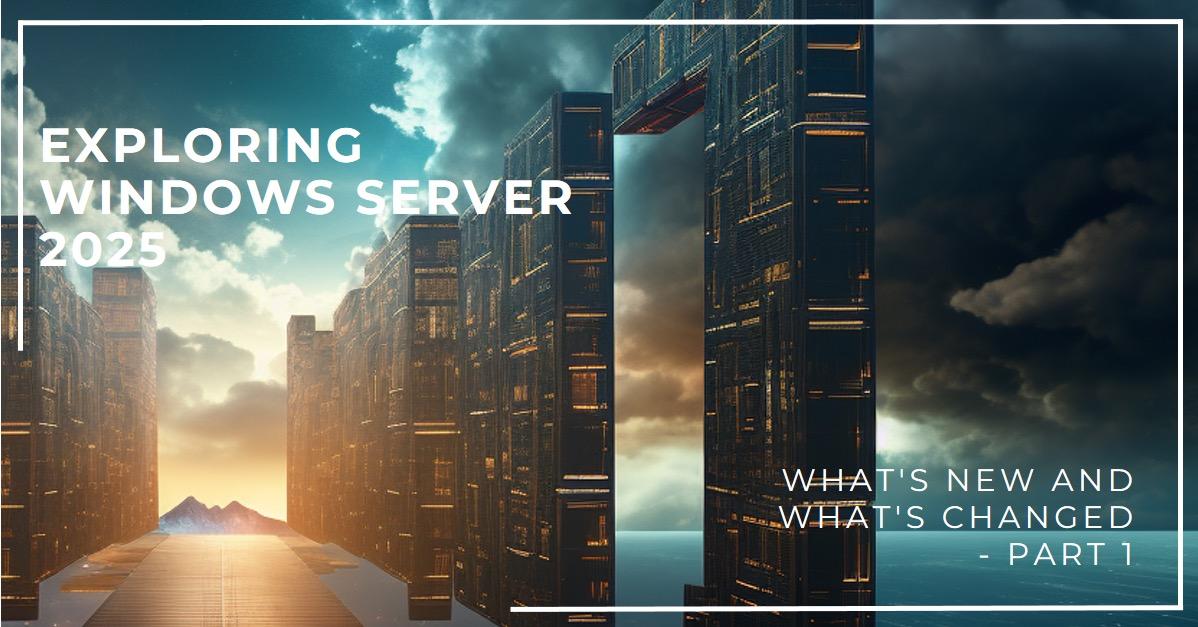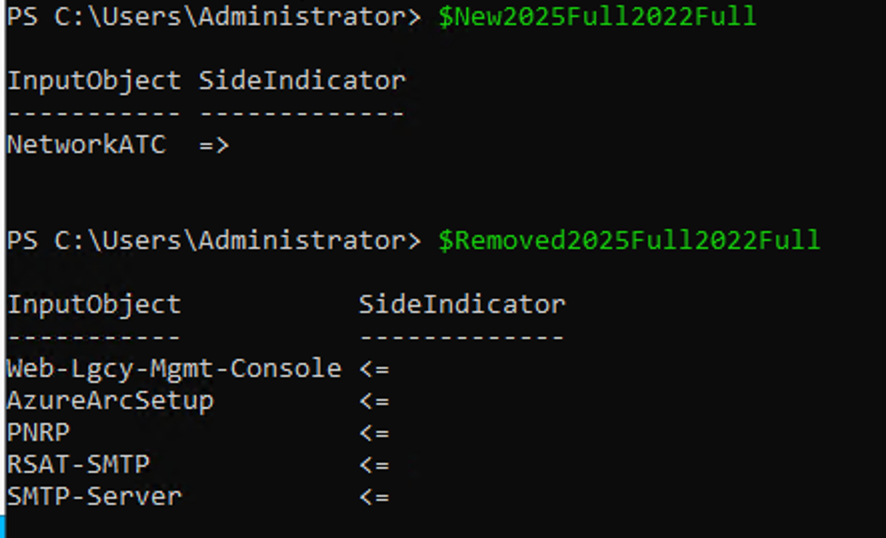Exploring Windows Server 2025: What’s New and What’s Changed - Part 1

Last month, Microsoft unveiled Windows Server Insider build 26040—the inaugural preview branded as Windows Server 2025. As seasoned Windows Server enthusiasts, we’re eager to delve into the enhancements and evolutions this release brings.
In this Part 1, we’ll deploy the fresh Windows Server build, meticulously compare available Windows Features and Roles, and scrutinize any modifications to in-box PowerShell modules. Buckle up for an insightful journey through the latest iteration of Windows Server!
Windows Server 2025 Installation: A Fresh Look
As we fire up the WinPE installer, the changes are immediately apparent. The revamped user interface now resembles the familiar Windows Client installers more than ever. Gone is the old “Microsoft Server Operating System Setup” label; instead, we’re greeted with the reassuring “Windows Server Setup”. And take note: the keyboard input selection screen has vanished.
But that’s not all. The installation or repair decision now takes center stage. Three straightforward options—Install, Repair, or switch to the legacy installer—await us. Personally, I find this approach more intuitive than the previous design, where “Repair your computer” was tucked away in the bottom left corner.
While we won’t dissect every screen of the installation process, it’s worth noting that these changes signal a positive shift. Windows Server 2025 is evolving, and I’m here for it!
Comparing Windows Features and Roles: What’s New in Windows Server 2025
After fresh installations of both operating system versions, we embark on a feature comparison journey. Using the PowerShell command Get-WindowsFeature, I extracted the features and employed Compare-Object to identify differences.
NetworkATC: A Game-Changer
The standout addition in Windows Server 2025 is the inclusion of NetworkATC—a feature previously exclusive to Azure Stack HCI. For the uninitiated, NetworkATC simplifies networking deployment by adhering to Microsoft’s best practices and minimizing errors. Users define their network intents (e.g., storage-only, VM traffic, or shared management) and can optionally override settings. Notably, this configuration extends beyond individual hosts; it can be applied to entire clusters, ensuring consistent network setups and automatic drift correction.
Hyper-V enthusiasts on Windows Server now enjoy the same robust networking experience as their Azure Stack HCI counterparts.
Features Removed in Windows Server 2025
With each new Windows edition, there are inevitable casualties—features that no longer make the cut. Windows Server 2025 is no exception. Let’s explore the notable removals:
- Peer Name Resolution Protocol (PNRP):
- PNRP, once part of Windows Server, has met its end. Security experts have long recommended disabling and removing it due to its vulnerability to exploits like DDoS attacks.
- SMTP Server and Supporting Tools:
- A feature that has been on the chopping block since Windows Server 2012, the SMTP Server and its supporting tools have finally bid farewell in Windows Server 2025.
- Managing SMTP in the IIS6 console (in Windows Server 2022) posed challenges for many users. Nowadays, alternatives like Azure Communication Services, SendGrid, or setting up a Postfix Linux relay have become more popular.
- Azure Arc Setup Feature:
- Introduced in Windows Server 2022 via a controversial Windows Update, the Azure Arc Setup feature has now vanished.
- Although the feature is gone, the Azure Arc Setup taskbar icon remains. To remove it, navigate to
HKLM\SOFTWARE\Microsoft\Windows\CurrentVersion\Runin the registry and delete theAzureArcSetupentry. - Despite its removal, the feature aimed to simplify Azure Arc onboarding, allowing seamless agent installation and connection to Azure directly from Windows Server.

Changes to in-box PowerShell Modules
In-box PowerShell modules have some new additions and updates in this build, but no removals. Here are the main changes:
- New Modules:
- DefenderPerformance: Troubleshoot and optimize Defender scanning performance, identify problematic files that slow down scans.
- LanguagePackManagement: Manage OS language packs.
- Microsoft.ReFsDedup.Commands: Manage the new ReFS deduplication and compression engine.
- Microsoft.Windows.Bcd.Cmdlets: Manage BCD entries with native PowerShell commands.
- Provisioning: Manage provisioning packages.
- Changed Modules:
- Get-NetView: Updated to a newer version.
- Defender: Added a rollback command.
- Appx: Added MSIX commands.
- Dism: Added commands for app provisioning, likely APPX/MSIX related.
- International: Copy international settings from user to system.
- NetSecurity: Added commands for managing firewall rules for WSLv2 containers.
- SmbShare: Added commands for SMB over QUIC functionality.
- Storage: Added
Convert-PhysicalDiskcommand that appears to be for converting existing disks into Storage Spaces volumes.
You can see more about the changes to the Powershell modules in this GitHub repository I’ve setup
In Conclusion: Windows Server 2025 Unveiled
As we bid farewell to the familiar landscapes of Windows Server 2022, we step into the future with Windows Server 2025. This release brings a blend of evolution and innovation, catering to both seasoned administrators and those embarking on their server journey.
From the streamlined deployment of NetworkATC to the revamped user interface, Windows Server 2025 promises a smoother experience. The removal of legacy features and the addition of powerful modules signal Microsoft’s commitment to modernization.
As you explore this new chapter, remember that Windows Server isn’t merely a name change; it represents Microsoft’s ongoing investment in meeting your infrastructure needs. Whether you’re managing virtual workloads, securing data, or optimizing performance, Windows Server 2025 awaits your command.
And stay tuned! In a future article, we’ll delve into the additional capabilities of Hyper-V—features that will elevate your virtualization game. 🚀

